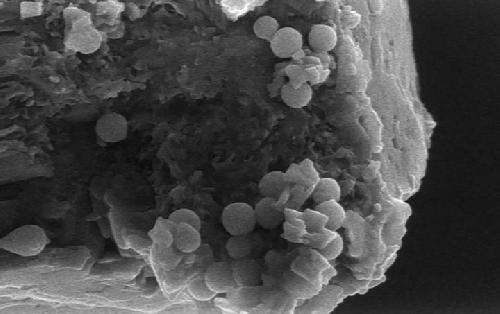The key to unlocking cleaner energy might be in our DNA, according to a new study by Stanford scientists. By combining synthetic DNA with microscopic particles, Yuran Zhang and a team of geothermal energy researchers hope to tap into the widely available but often overlooked cleaner energy source all over the world.
Geothermal energy is the heat of the earth, and geothermal power is generated by extracting that heat and converting it to electricity. Effectively, the heat moves through irregular cracks or fractures deep underground, so geothermal engineers must have a detailed understanding of the underlying geology and the location and orientation of those fractures. This is where DNA and advanced nanoparticle technology enter the geothermal picture.
"Currently, reservoir fracture networks are still poorly known despite advances in seismic imaging, tracer testing, and other imaging and sensing technologies," said study first author Zhang, graduate student at Stanford's School of Earth, Energy & Environmental Sciences.
 Spherical nanoparticles (light grey) embedded with DNA attached to a single grain of sand as seen through a scanning electron microscope following the Stanford geothermal team's experiment. Credit: courtesy of Yuran Zhang
Spherical nanoparticles (light grey) embedded with DNA attached to a single grain of sand as seen through a scanning electron microscope following the Stanford geothermal team's experiment. Credit: courtesy of Yuran Zhang
"Nanotracers are able to carry much more information about the reservoir, from temperature distribution to fracture geometry," Zhang continued.
Medical researchers have experimented with medications encapsulated within nanoparticles that circulate throughout the human body and melt or open at a certain temperature. While the temperatures inside Earth are much higher, the geothermal nanotracers essentially work in the same way, allowing researchers to better map the underground heat sources.
When reservoir engineers inject tracers into a geothermal field to map it, they do so at multiple sites spread out across a relatively large area. Currently, when the particles pop back up in other wells, it is nearly impossible to determine which well they started from. This limits the critical information needed to better harness the geothermal energy.
"Adding DNA to the nanotracers largely resolves this issue," Zhang said. "DNA has a nearly infinite number of sequences. By encoding each batch of tracers with a unique DNA signature, we could get a much clearer picture of the temperature distribution and fracture geometry that we need."
In the study, Zhang and her team embedded synthetically derived DNA molecules between silica nanoparticles and an additional silica shell. They then injected these particles through packed sand at various temperatures to see if the unique DNA tags and silica shells survived the journey, analogous to what they might experience in the field.
"We were surprised to find that the particles could survive temperatures as high at 302 degrees Fahrenheit (150 degrees C), meaning that they could possibly survive the extreme environments of geothermal fields," Zhang said.
While currently developed geothermal fields could benefit from a better understanding of the subsurface, the future of geothermal power likely lies in enhanced geothermal systems, where humans inject water underground to fracture the rock.
"The results from this initial study represent a significant step toward our goal of characterizing geothermal resources that are presently difficult to exploit," said study coauthor Roland Horne, the director of the Stanford Geothermal Program.
"Each enhanced geothermal system is unique based on the underlying geology and fracture geometry," Horne said. "To develop those systems properly, we will need to know how those fractures join together and how the temperature field is distributed. DNA-embedded nanotracers could be a powerful tool that would help realize geothermal energy's global potential."
Conservative estimates indicate that geothermal energy might, one day, provide 5 percent of the world's power supply if enhanced geothermal systems can be optimized. While that number might sound small, Horne and Zhang see geothermal playing an important role in our energy future.
"Five percent of 22,000 billion kilowatt hours is still a lot of energy," Horne said.
source: Stanford's School of Earth, Energy & Environmental Sciences